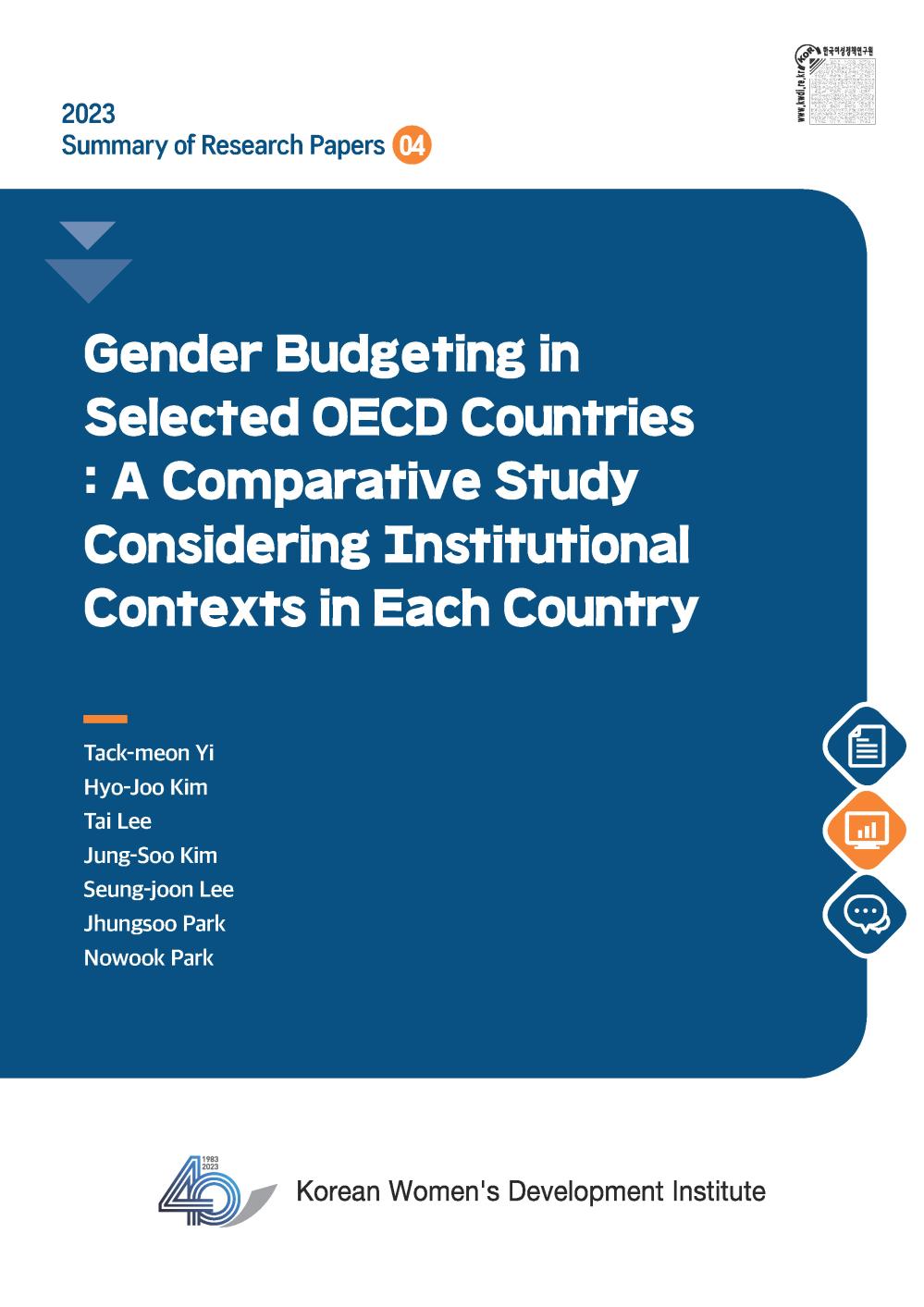Report
| Gender Budgeting in Selected OECD Countries: a Comparative Study Considering Institutional Contexts | |||
|---|---|---|---|
| Type | Basic | Period | 2023 |
| Manager | Tack-meon Yi | Date | 2023-12-29 |
| Fiie | 04_OECD 주요국 성인지예산제도 현황과 시사점 각국 예산제도.pdf ( 2.21 MB ) | ||
|
Abstract Gender Budgeting in Selected OECD Countries : a Comparative Study Considering Institutional Contexts Tack-meon Yi Hyo-Joo Kim Lee Tai Jung-Soo Kim Seung-joon Lee Jhungsoo Park Nowook Park
This study begins with realizing that previous comparative studies of gender budgeting in OECD countries have been conducted on the basis of an isolated analysis on agents and legal arrangements apparently involved only with gender budgeting, ignoring broader institutional contexts within which gender budgeting has been inter-connected and/or dis-connected to other systems. On the basis of this realization, the study tries to look into the center of government and its roles in the whole government organization, the process of policy and program evaluation and the overall budget process and public finance management system in the 8 member states(Canada, Sweden, Austria, Spain, Mexico, Australia, Iceland and Norway) of the OECD. These are the contextual factors the study regards impacting the process of gender budgeting in each country. Further, the study divides the whole process in which democratically elected governments are performing their duties into three major phases – the phase of strategic plannig, the phase of budget allocation, and the phase of evaluation and performance management. The study scrutinizes the ways each country does its job in those three phases, focusing on what ministries or agents are involved and which one of them leads the others.
The study defines gender budgeting as a process of integrating a gender perspective into each of these phases. Accordingly, it describes the degree to which gender perspective is integrated into these phases and identifies the organization(s) being involved, and/or playing leading roles, in the process of integration. The study compares the 8 member states and Korea by these two dimensions - the 3 phases of government action and the government organizations involved in each phase. Then, the study derives three ideal types of performing gender budgeting within the institutional context – the Canadian type, the Austrian type, the Swedish type and the outliers(Australia and Mexico) characterizing the Korean case as a weak version of the Swedish type. Finally the study examines the implications of comparative analysis and proposes several long-term recommendations for a more effective and impactful gender budgeting in Korea.
Research areas: Gender Equality Policy, gender budgeting, OECD Countries, budget process, institutional contexts Keywords: OECD, gender budgeting, institutional contexts |
|||
